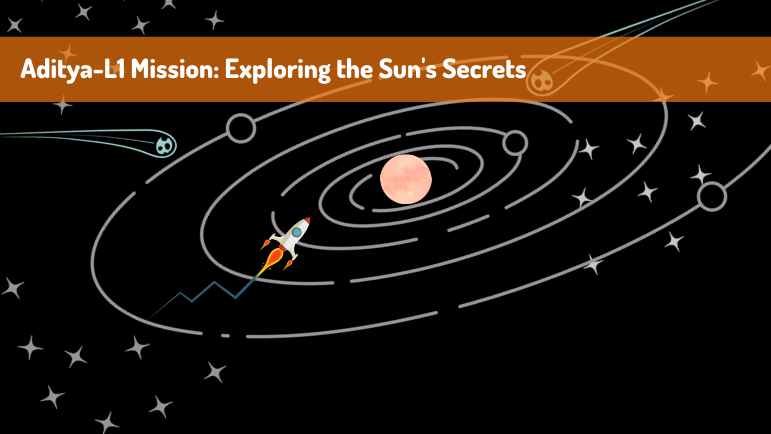
The Aditya-L1 mission is India's ambitious endeavor to study the Sun, our closest star, in unprecedented detail. Named after the Sun God, Aditya, this mission aims to provide valuable insights into the Sun's behavior and its impact on Earth. In this blog, we will delve into the Aditya-L1 mission, its objectives, instrumentation, and the scientific significance of this remarkable solar mission.
Understanding Solar Activity: Aditya-L1's primary goal is to study solar activities, such as solar flares and coronal mass ejections (CMEs). By doing so, scientists hope to gain a better understanding of the Sun's behavior and its influence on space weather.
Studying the Sun's Atmosphere: The mission aims to investigate the outermost layer of the Sun's atmosphere, known as the corona, which is much hotter than the Sun's surface. This temperature difference, referred to as the solar coronal heating problem, is one of the key mysteries that Aditya-L1 seeks to unravel.
Measuring Solar Magnetic Fields: Aditya-L1 will measure the Sun's magnetic field with high precision, helping scientists study the origin and dynamics of solar magnetic fields. Understanding these fields is crucial for predicting solar storms that can affect communication and power systems on Earth.
Solar Wind Monitoring: The mission will also monitor the solar wind, a stream of charged particles emanating from the Sun. By analyzing the solar wind's properties, scientists can improve space weather forecasting.
Aditya-L1 is equipped with a suite of advanced instruments to achieve its scientific objectives:
Visible Emission Line Coronagraph (VELC): VELC will capture images of the solar corona in the visible and ultraviolet spectra. It will help in understanding the Sun's outer atmosphere and its dynamics.
Multi-Application Solar Telescope (MAST): MAST will observe the Sun's photosphere and chromosphere, providing insights into the Sun's surface features, temperature variations, and magnetic fields.
Aditya Solar Wind Particle Experiment (ASPEX): ASPEX will measure the properties of solar wind particles, helping scientists understand the solar wind's composition and energy.
Plasma Analyzer Package for Aditya (PAPA): PAPA will analyze the composition and properties of solar wind ions, providing critical data for studying space weather.
The Aditya-L1 mission holds immense scientific significance:
Space Weather Prediction: Solar activities, such as solar flares and CMEs, can disrupt communication systems, navigation, and power grids on Earth. Understanding these phenomena through Aditya-L1 data will enable better space weather prediction and mitigation strategies.
Advancing Solar Physics: The mission will contribute to our knowledge of the Sun's structure, magnetic fields, and atmospheric dynamics, helping scientists solve long-standing mysteries about the Sun's behavior.
International Collaboration: Aditya-L1 is part of a global effort to study the Sun. Collaboration with international space agencies and researchers will enhance our collective understanding of our Sun.
The Aditya-L1 mission represents a significant leap forward in solar science. By studying the Sun with unprecedented detail, India is contributing to our understanding of the star that sustains life on Earth and has a profound impact on our technological systems. The data and insights gained from this mission will not only advance solar physics but also improve our ability to predict and mitigate the effects of space weather on our planet. Aditya-L1 truly symbolizes humanity's quest to unlock the secrets of the cosmos.